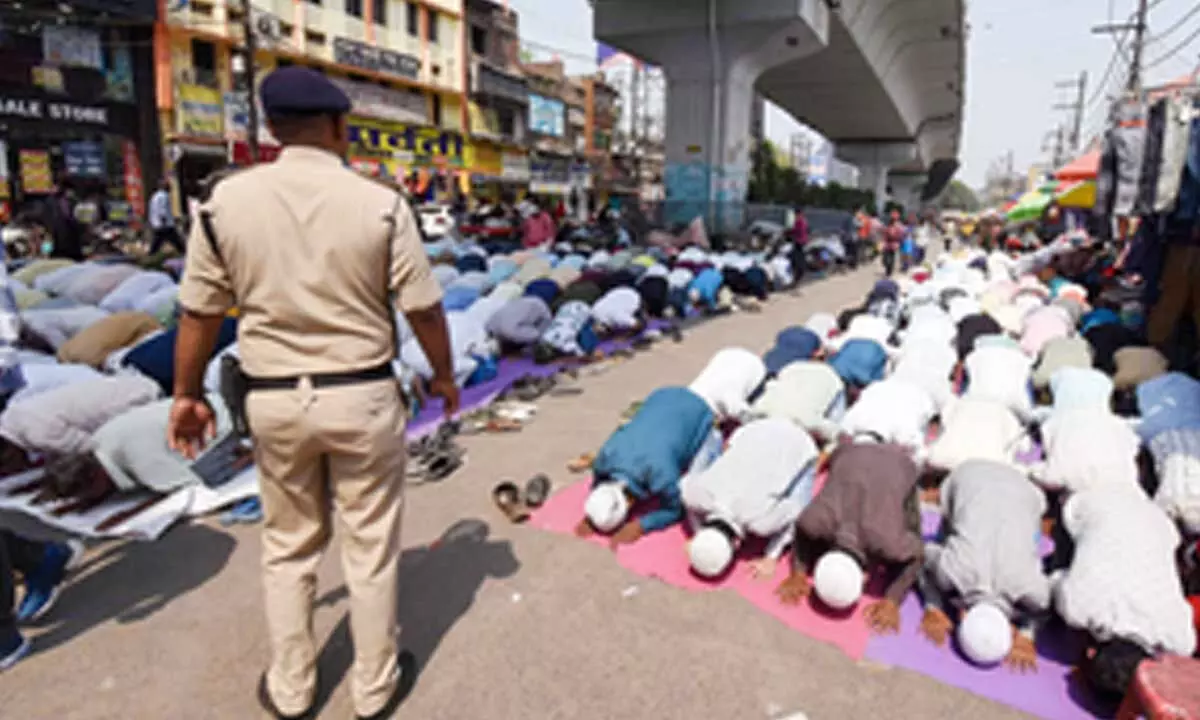Live
- G20 Leaders Will Talk About Climate, Taxes, and Trump's Return in Brazil
- COP29: CDRI announces $8 million funding for 12 projects to address climate crisis
- Anti-Telgu remarks: Actor Kasthuri Shankar moves court for bail
- Samsung AR Smart Glasses Set to Launch in 2025, Featuring Ray-Ban Meta-Like Design
- Kerala Industries Minister confident that new policy will boost plantation sector
- Madras HC plans inter-departmental monitoring committee to combat drug use in TN
- Bihar: Spotted deer dies due to heart attack in Banka district
- Mushtaq Ali T20: Shami to spearhead Bengal bowling attack, Gharami named captain
- Kharge's clarion call to oust Maharashtra's BJP-backed MahaYuti
- Why Ukraine’s Use of US Missiles Against Russia Could Lead to World War 3
Just In
Cong's ‘saffron terror’, '26/11 RSS plot’ jibes haunt party amid appeasement politics row

Amid a raging controversy over Prime Minister, Narendra Modi’s, remarks on ‘minority, particularly Muslim appeasement’ during Dr Manmohan Singh-led UPA regimes and the subsequent war of words between the BJP and Congress, a set of ‘old issues’ including the coinage of ‘saffron terror’ have come back to haunt the grand old party.
New Delhi: Amid a raging controversy over Prime Minister, Narendra Modi’s, remarks on ‘minority, particularly Muslim appeasement’ during Dr Manmohan Singh-led UPA regimes and the subsequent war of words between the BJP and Congress, a set of ‘old issues’ including the coinage of ‘saffron terror’ have come back to haunt the grand old party.
While the BJP has dug deep and shared videos of minority appeasement politics by Congress governments, the social media has also got talking about how the latter had a ‘soft corner’ for minorities and how it ‘demonised’ the majority community.
Right from 2004, the beginning of the UPA government, several incidents happened which point to the grand old party’s minority tilt, apparently for cultivating a committed vote bank.
In 2004, Congress-led UPA government repealed Prevention of Terrorism Act (POTA), an anti-terror law.
The then dispensation may have its intentions right but the series of terror attacks in subsequent years, across the country, belied its motive.
The Sachar Committee appointed by the Dr Manmohan Singh government in 2005 to study the social, economic and educational conditions of Muslims was seen as a move with a partisan approach.
In 2006, Prime Minister Manmohan Singh said that minorities, Muslims in particular, should have the first claim to the nation’s resources.
This is what PM Modi pointed at in his Rajasthan rally, creating strong heartburn in the Congress circles.
In 2007, the coinage of ‘saffron terror’ drew as much attention as controversy.
From Congress government to top party leadership, all used this as a handle to hit out at BJP and demonise the RSS.
The Batla House encounter by Delhi Police was a notable achievement but it too became a victim of the Congress’ appeasement politics.
Though, government refrained from saying much, Congress called it a fake encounter and its ecosystem besmirched the brave police officers who killed the terrorists in the deadly encounter.
As per top Congress leader Salman Khurshid, the then party President Sonia Gandhi also cried after seeing the dead bodies.
Mumbai terror attacks 2008, which singed the economic capital of India, left the whole country livid and outraged.
Terrorist Ajmal Kasab, hailing from Pakistan was caught alive and he also made candid admissions about Pakistan’s wicket plot to unleash terror in India.
Despite all this, Digvijaya Singh, with close links to Gandhis, released a book and claimed that the 26/11 attacks were a RSS conspiracy.
The Communal Violence Bill proposed by the Sonia Gandhi-led National Advisory Council (NAC) in 2011 also invited huge controversy.
Akhilesh Mishra, the CEO of BlueKraft Digital Foundation claims that this proposed law had provisions, which could have “turned Hindus into second class citizens in their own country.”
Meanwhile, the Congress party is likely to move Election Commission, seeking action against the ‘highly divisive’ statement by PM Modi at the Rajasthan election rally. But, the series of its anti-majority or anti-Hindus stand during UPA-I and UPA-II, as mentioned above, makes one believe that it is ‘rightly’ deserving the backlash.

© 2024 Hyderabad Media House Limited/The Hans India. All rights reserved. Powered by hocalwire.com






